If you’ve ever bitten into a creamy, sweet, and slightly tangy soursop fruit, you’ll know why it’s considered a tropical delicacy around the world. Known locally in the Caribbean as guanábana, soursop (Annona muricata) is prized not just for its delicious flavor but also for its medicinal benefits. And if you live in South Florida’s warm, subtropical climate, you’re in luck — it’s one of the few regions in the continental U.S. where you can successfully grow this tropical gem outdoors.
In this comprehensive guide, we’ll walk you through how to grow soursop in South Florida — from choosing the right planting spot to pest management and harvesting those spiky green treasures.
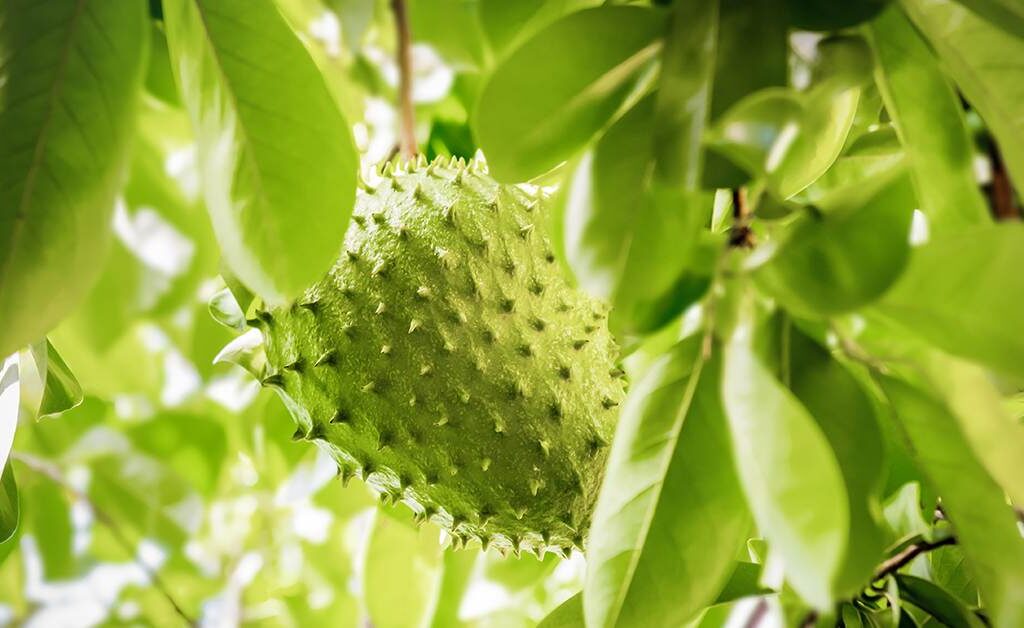
What is Soursop (Guanabana)?
Soursop is an evergreen tropical fruit tree native to the Caribbean, Central America, and parts of South America. The fruit is large, heart-shaped, and covered in soft green spines. Its creamy white flesh is aromatic, with a unique flavor that’s often described as a blend of pineapple, banana, and citrus.
Aside from being delicious, soursop is known for its traditional medicinal uses — believed to support immunity, digestion, and relaxation.

Can You Grow Soursop in South Florida?
Yes! South Florida’s climate is one of the best in the United States for growing soursop outdoors.
Ideal growing conditions:
- USDA Hardiness Zones: 10a–11
- Temperature range: 70°F–85°F (21°C–29°C)
- Cannot tolerate temperatures below 40°F (4°C) without damage.
South Florida’s mild winters, humid summers, and rich soils offer a near-perfect environment for soursop to flourish.
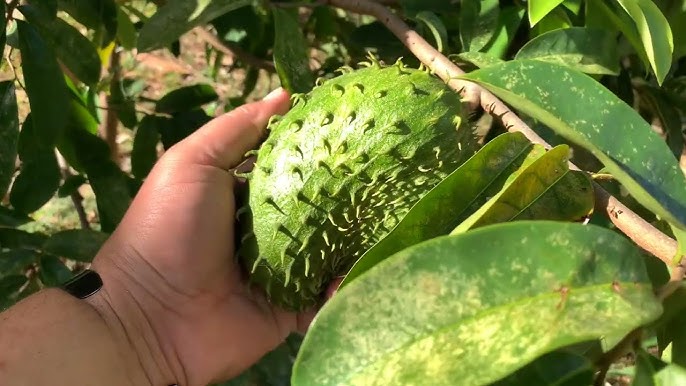
When to Plant Soursop in South Florida
The best time to plant soursop in South Florida is during the late spring or early summer, once the soil has warmed consistently and the chance of cold snaps has passed.
Planting in this season ensures rapid growth and gives the young tree time to establish before winter.
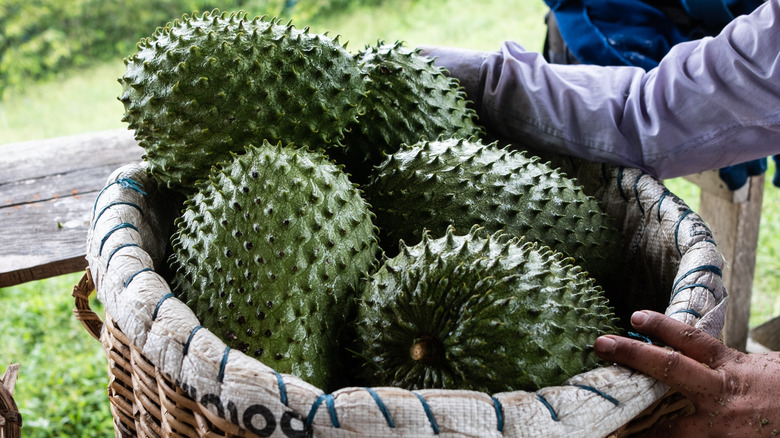
How to Plant Soursop in South Florida
1. Choose a Good Planting Spot
- Full sun exposure: At least 6–8 hours of direct sunlight daily.
- Sheltered location: Protect young trees from strong winds, especially hurricanes.
- Well-draining soil: Soursop doesn’t like soggy feet — sandy loam or organically enriched soils work best.
Pro Tip: Avoid low-lying areas where water tends to collect after heavy rains.
2. Preparing the Soil
Enrich the planting area with:
- Organic compost
- Well-rotted manure
- A balanced slow-release fertilizer (10-10-10)
Ensure soil pH is between 5.5 and 6.5 for optimal growth.
3. Planting the Tree
- Dig a hole twice as wide and as deep as the root ball.
- Remove the tree from its container carefully to avoid disturbing roots.
- Place the tree in the hole, ensuring it sits at the same depth it was growing in the pot.
- Backfill with enriched soil, gently tamping it down to eliminate air pockets.
- Water thoroughly after planting.
Space requirement: 15–25 feet away from other trees or structures for healthy root spread and canopy growth.
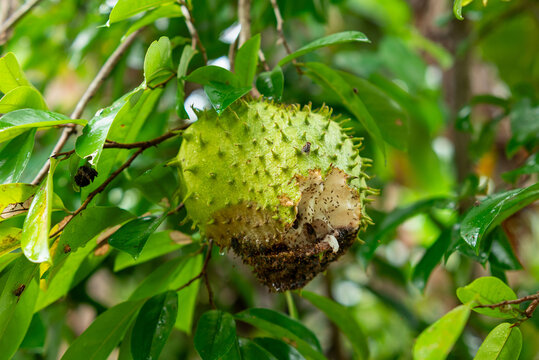
Watering and Fertilizing
Watering
Soursop thrives in evenly moist, well-drained soil.
Watering guide:
- Water 2–3 times a week for young trees.
- Mature trees can handle once-weekly deep watering during dry spells.
- Avoid overwatering to prevent root rot.
Fertilizing
Feed your soursop tree regularly to encourage strong, healthy growth.
Fertilizer guide:
- Apply a balanced (10-10-10) granular fertilizer every 6–8 weeks during the growing season.
- Top-dress with compost or aged manure in spring and midsummer.
- Reduce fertilization during cooler months.
Pruning and Maintenance
Regular pruning helps shape the tree, promote airflow, and improve fruit yield.
When to prune:
- After the first growing season.
- Remove:
- Dead or damaged branches
- Low-hanging limbs
- Crossed or overcrowded branches
Maintain a manageable height of 12–15 feet for easy care and harvesting.
Common Pests and How to Control Them
While soursop is relatively hardy, it can attract some common tropical pests in South Florida.
| Pest | Symptom | Organic Control |
|---|---|---|
| Fruit flies | Small larvae in fruits | Use fruit fly traps and harvest early |
| Mealybugs | Cottony clusters on branches | Neem oil or insecticidal soap |
| Scale insects | Sticky sap and sooty mold | Horticultural oil spray |
| Aphids | Leaf curl, sticky residue | Natural predators like ladybugs or neem oil |
Tip: Keep the area around the tree clean of fallen fruits and debris to discourage pests.
Flowering and Pollination
Soursop trees bloom within 3–5 years from planting, producing small yellow-green flowers directly on the trunk or branches.
Pollination tips:
- In South Florida, natural pollinators like beetles and small flies may assist.
- For better fruit set, hand-pollinate using a small brush to transfer pollen between flowers in the early morning hours.
Harvesting Soursop
Time to maturity:
- 3–5 years after planting from seed
- 2–3 years from grafted trees
When to harvest:
- When the fruit’s skin turns from dark green to lighter green or pale yellowish-green.
- The fruit should feel slightly soft when gently squeezed.
Harvesting tip:
Use pruning shears or twist the fruit gently from the branch to avoid damaging the tree.
Important: Don’t let soursop overripen on the tree — it can split or attract pests.
How to Use and Store Soursop
Culinary uses:
- Eaten fresh by scooping out the creamy flesh
- Blended into smoothies, ice creams, and juices
- Used in desserts, jams, and syrups
Storage tips:
- Ripe soursop lasts 2–3 days at room temperature.
- Refrigerate ripe fruit for up to a week.
- Flesh can be frozen for smoothies and desserts for up to 6 months.
Health Benefits of Soursop
Soursop isn’t just delicious — it’s also loaded with beneficial nutrients:
- High in Vitamin C: Supports immunity
- Rich in fiber: Aids digestion
- Antioxidants: Protect against oxidative stress
- Alkaloids and acetogenins: Researched for potential health benefits (though always consult a healthcare professional before using for medicinal purposes)
Quick Growing Tips
Plant in full sun with shelter from strong winds
Maintain regular watering without over-saturating the soil
Fertilize every 6–8 weeks during active growth
Prune annually to encourage fruiting and airflow
Use organic pest controls when necessary
Harvest fruits when they’re slightly soft and pale green
Final Thoughts
Growing soursop in South Florida is a deeply rewarding venture for any gardener with a taste for the tropics. With a little care, patience, and attention to this tree’s preferences, you’ll be rewarded with luscious, fragrant fruits perfect for cooling smoothies, decadent desserts, or just enjoying fresh from your backyard.
Ready to plant your guanabana tree?

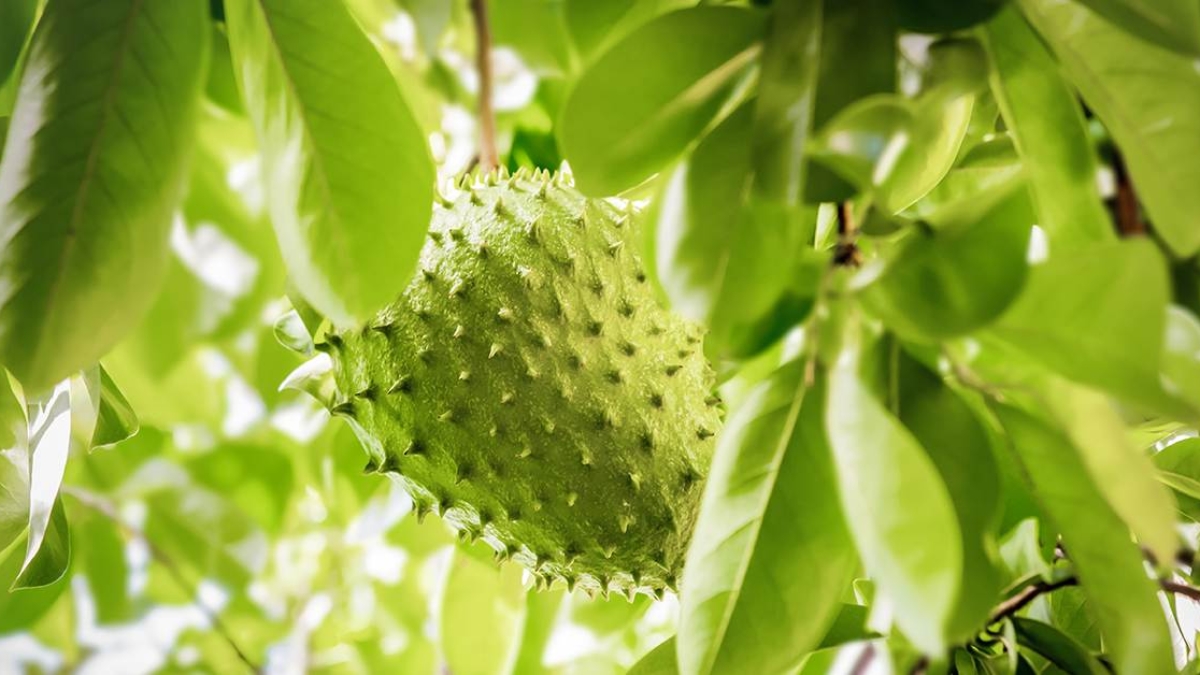




Leave A Comment